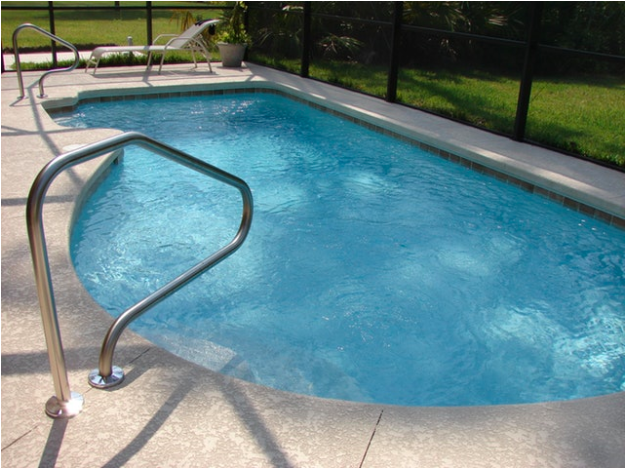
Stains and discoloration in swimming pools is nothing out of the ordinary, but they can be a visual deterrent for proud pool owners. Some pool stains can be scrubbed away while others need more powerful chemicals. The key is identifying what the stain is so that you can use the proper ingredients on it. You wouldn’t want to rush into things and make the discoloration worse!
Let’s go over the most common swimming pool stains and how to diagnose them. Some stains can be treated with natural ingredients and a bit of scrubbing power, while others will need more potent cleaners.
Most Common Swimming Pool Stains
Metal Stains
Common metals that affect pool water are manganese, copper and iron. Manganese causes brownish-black or purple stains. Copper creates teal or turquoise-green color marks. Iron produces a rusty reddish-brown color. You can control stains from metals and minerals by using a metal pool stain cleaner. These products clean and prevent mineral stains from reoccurring.
Mineral Stains
Mineral stains present themselves as film that’s mixed with dirt and oils. You can usually find these stains along the waterline of the pool. They’re scaly and white. Mineral stains can find their way onto other pool surfaces as well, not just tile. There are a number of products that can be used to treat and prevent scale film, though you’ll probably need a pumice stone to scrub the stains away.
Rust Stains
Rust stains typically occur in isolated spots, such as next to the pool ladder. This happens because pool ladders often have metal on them. Because many pools do have metal components, it’s also possible that the rust is coming from the inside. Aside from store bought products, you can also try a vinegar or baking soda solution to remove rust stains.
Waterline Stains
Waterline stains are similar to mineral stains, except they’re not scaly white deposits. Waterline stains form from oils and dirt that surface and mix with particulate matter. People also call these stains “scum lines”. To remove oily organic compounds from your pool water, try an enzyme product along with a pumice stone, stain eraser or scale remover.
Organic Stains
If you see a greenish-brown stain on your pool, it’s probably from something organic such as leaves or trees. Some animals, worms and algae can also leave organic stains on your pool. Keeping your pool covered can help prevent some of this, but it won’t deal with it entirely. If you’re still having problems, use chlorine granules to bleach out the color.
How to Treat Pool Stains
Aside from using a number of stain cleaning products, you can also shock your swimming pool. This is a quick and easy way to remove most stains. In the process, be sure to give your pool a bit of attention by scrubbing it gently with a brush. Maintenance goes a long way, too, so be sure to keep up with your pool to prevent it from getting covered in stains. Here are a few pointers:
- Keep your pool clean
- Trim back trees and bushes
- Invest in a quality pool cover
- Purchase an automatic pool cleaner
- Balance your water using chemicals
- Try a metal eliminator (for pools with metal levels)
If your pool has stains and you’re not sure what to do with them, give Paradise Pools a call. We can help you diagnose the stain and point you in the direction of which products to use.

 CALL US TODAY!
CALL US TODAY!



